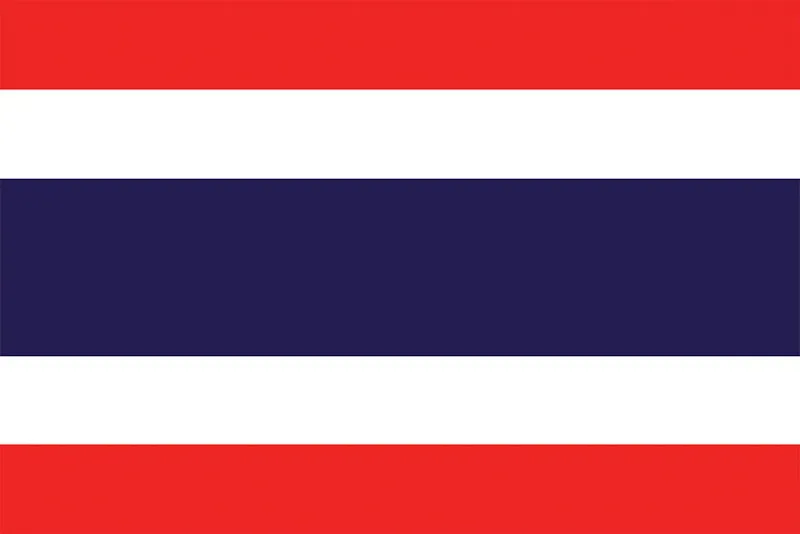Integrated Energy Strategy for APAC Poultry: Where to Invest First
Energy costs and price volatility represent an immediate operational risk for poultry integrators across Asia-Pacific. Recent regulatory developments have fundamentally changed how electricity is priced in the region.
Malaysia introduced an Automatic Fuel Adjustment (AFA) mechanism in 2025, making electricity tariffs responsive to monthly changes in fuel prices and exchange rates. High-consumption users like poultry farms now face more frequent rate adjustments.
Vietnam's state utility EVN raised average retail electricity prices in mid-2025, continuing a multi-year trend of tariff increases linked to rising generation costs.
The Philippines saw distribution utility Meralco announce multiple tariff adjustments throughout 2025, reflecting volatility in pass-through generation charges.
Indonesia remains exposed to coal and gas price fluctuations. Government interventions to set benchmark coal prices demonstrate how fuel market volatility flows directly into electricity generation costs.
For integrators, these changes translate into higher and less predictable energy bills. Farms also face greater exposure to peak-demand penalties and must factor energy volatility into both capital and operational planning.
Understanding Energy Consumption in Poultry Operations
Energy costs can consume up to 30% of total production expenses in commercial poultry operations. With feed prices remaining volatile and input inflation persistent across APAC markets, energy efficiency represents one of the few cost levers integrators can directly control.
Export buyers increasingly demand carbon footprint and energy intensity data from suppliers. Farms that adopt measurable efficiency improvements gain competitive advantages in international markets and become more attractive to financiers offering green lending programs.
Where Energy Goes: System-by-System Breakdown
| System | % of Total Electricity | Key Characteristics |
| Ventilation Fans | 70-88% | Single largest consumer. Fixed-speed fans waste significant power during partial-load operation. |
| Cooling Systems | 5-10% | Load spikes during hot and humid conditions, particularly in tropical climates. |
| Lighting | 5-12% | Substantial savings possible with LED retrofits. |
| Feeding & Watering Motors | <5% | Smaller but continuous load. |
| Heating (if used) | Variable | Minimal in tropical APAC but relevant in highland farms. |
The dominance of ventilation in the energy budget means that any strategy failing to address fan efficiency will miss the majority of potential savings.
Investment Priority Framework

Low Capital Investment
LED Lighting Retrofits
Switching from traditional incandescent or compact fluorescent lamps to LED technology cuts lighting energy use by 50-60%. LED systems also generate less heat, reducing cooling loads in warm climates.
Fan Maintenance Programs
Accumulated dirt on fan blades can reduce airflow capacity by up to 40%. Systematic maintenance including blade cleaning and belt tensioning improves ventilation efficiency by 10-15% with negligible cost.
Basic Energy Audits
Professional energy audits identify inefficient scheduling, hidden electrical loads, and air leakage points. These assessments typically reveal savings opportunities worth 10-20 times the audit investment.
Medium Capital Investment

Variable-Speed Ventilation Fans
Traditional fixed-speed fans operate at full power regardless of actual ventilation needs. Variable-speed fans use variable frequency drives (VFD) to modulate fan speed based on real-time temperature, humidity, and air quality sensors.
Research demonstrates that VFD-controlled ventilation reduces electricity consumption to 64-75% of conventional on-off systems. The savings come from a fundamental principle: fan power consumption follows the cube law. Reducing fan speed by 50% cuts energy use to just 12.5% of full-speed operation.
Field trials show daily energy savings of 25-36% when variable-speed fans replace fixed-speed units while maintaining required ventilation rates. Return on investment typically occurs within 2-4 years, depending on local electricity tariffs.
Automation & Smart Controls
Modern farm management systems integrate ventilation, lighting, feeding, and cooling into a unified control platform. Real-time dashboards track energy consumption by system and production cycle, allowing managers to identify anomalies quickly and avoid peak-demand charges.
Higher Capital Requirement

Insulated Poultry Houses
Proper insulation stabilizes internal temperatures and reduces reliance on mechanical ventilation and cooling. Energy consumption data shows that insulated poultry houses require 30-130 kWh/m² annually, compared to 70-180 kWh/m² for poorly insulated facilities.
Beyond energy savings, insulated houses deliver better feed conversion ratios, lower mortality rates, and improved compliance with animal welfare standards. Return on investment for insulation retrofits typically spans 4-6 years.
Evidence from Field Research
University of Arkansas Broiler House Audit (2024)
Researchers conducted a comprehensive electricity audit across four consecutive growth cycles. The study found that ventilation fans accounted for 88% of total electricity demand and represented the most significant contributor to peak-demand charges. Simple scheduling improvements reduced peak demand by 15% without compromising bird comfort.
Variable-Speed Fan Performance Studies
Research comparing VFD-controlled fans to conventional systems found that VFD control reduced electricity consumption to approximately 64% of the baseline in greenhouses and 75% in poultry houses. Field measurements demonstrate that properly specified variable-speed fans cut daily energy consumption by 25-36% while maintaining required air exchange rates.
Insulation Impact on Energy Intensity
Research on energy consumption patterns shows that insulation quality directly correlates with energy intensity. Final energy consumption per unit area ranges from 30 kWh/m² in well-insulated, automated facilities to 130 kWh/m² in poorly insulated structures. Even in consistently warm tropical climates, insulation reduces cooling loads by limiting heat transfer from external surfaces.
Common Energy Efficiency Myths
Myth 1: Variable-speed fans reduce airflow quality
Reality: Properly designed variable-speed systems maintain consistent air velocity and exchange rates. The control systems modulate speed to meet target ventilation rates, not to reduce airflow below optimal levels. Studies show that variable-speed fans deliver better air quality than fixed-speed systems because they avoid the on-off cycling that creates airflow surges and stagnant periods.
Myth 2: Insulation is too expensive for tropical climates
Reality: Insulation reduces heat gain from intense solar radiation on roof and wall surfaces, translating directly into lower cooling pad and fan runtime. The ROI period extends to 5-6 years in tropical zones compared to 3-4 years in temperate regions, but the investment still pays for itself.
Myth 3: Energy management requires constant manual oversight
Reality: Modern automation systems handle energy optimization autonomously. Sensors continuously monitor temperature, humidity, CO₂, and ammonia levels. Control algorithms adjust ventilation, cooling, and lighting based on these inputs without human intervention.
Myth 4: Older fans work fine if properly maintained
Reality: While maintenance extends equipment life, older fixed-speed fans have fundamental efficiency limitations. Belt-driven fans lose 5-10% of motor power through transmission. Fixed-speed motors cannot optimize energy use during partial-load conditions.
Integrated Strategy: Combining Technologies
Individual improvements deliver measurable savings, but combining multiple technologies creates compounding benefits.
Variable-Speed Fans reduce baseline energy consumption by modulating airflow to actual needs rather than design maximum capacity.
Insulated Houses stabilize internal conditions, allowing ventilation systems to operate at lower average speeds. The synergy between insulation and variable-speed fans amplifies savings from both technologies.
Farm Management Software integrates all systems into a unified platform. The software tracks environmental parameters in real time and maintains optimal conditions while minimizing energy use. Decision-makers gain access to energy consumption dashboards that show ROI by system and identify opportunities for continuous improvement.
This integrated approach transforms energy management from a reactive cost control exercise into a proactive optimization strategy.
Energy volatility has fundamentally reshaped poultry economics across Asia-Pacific. Tariffs now respond to fuel prices in Malaysia, increase annually in Vietnam, fluctuate monthly in the Philippines, and track volatile coal and gas markets in Indonesia.
The path forward requires prioritizing high-impact interventions. Variable-speed ventilation fans, building insulation, and integrated farm management systems deliver measurable ROI while improving operational resilience.
Integrators that implement these technologies gain competitive advantages through lower production costs, reduced exposure to tariff volatility, and improved bird performance. The question is no longer whether to invest in energy efficiency, but rather how quickly operations can deploy proven solutions that protect margins and ensure long-term competitiveness.
Frequently Asked Questions
What percentage of poultry farm costs is energy?
Energy represents 20-30% of total production expenses in modern poultry operations.
Where does most energy go in a poultry house?
Ventilation fans consume 70-88% of total electricity use, making them the single largest energy load.
What delivers the fastest return on investment?
Variable-speed ventilation fans typically achieve ROI within 2-4 years through 25-36% energy savings.
How much can proper insulation save?
Well-insulated poultry houses reduce energy consumption from 130 kWh/m² to as low as 30 kWh/m² annually.
References
- Energy Costs Associated with Commercial Broiler Production. The Poultry Site.
https://www.thepoultrysite.com/articles/energy-costs-associated-with-commercial-broiler-production - Percentages of energy consumption for broilers, laying hens. ResearchGate.
https://www.researchgate.net/figure/Percentages-of-energy-consumption-for-broilers-laying-hens-referred-at-single-place_tbl3_311978083 - Chicken house energy audit provides clues to curbing 'peak demand'. University of Arkansas Division of Agriculture. September 16, 2024. https://www.uaex.uada.edu/media-resources/news/2024/september2024/09-16-2024-ark-broiler-house-electricity-usage.aspx
- Energy saving in agricultural buildings through fan motor control by variable frequency drives. ScienceDirect. August 7, 2007. https://www.sciencedirect.com/science/article/abs/pii/S0378778807002058
- Energy Consumption and Energy Saving Measures in Poultry. Civil Engineering and Architecture, 2017. https://www.hrpub.org/journals/article_info.php?aid=5759
- Energy Efficiency Advice for Poultry Farmers. Farm Carbon Toolkit. August 12, 2021.
https://farmcarbontoolkit.org.uk/toolkit-page/energy-efficiency-advice-for-poultry-farmers/ - Poultry Ventilation Fan Maintenance and Energy Savings. Oklahoma State University Extension. March 1, 2017.
https://extension.okstate.edu/fact-sheets/poultry-ventilation-fan-maintenance-and-energy-savings.html - Ventilation Innovations That Deliver Energy Savings. Canadian Poultry Magazine. March 11, 2025.
https://www.canadianpoultrymag.com/ventilation-innovation/ - Variable Speed Tunnel Fans Can Result in Dramatic Power Savings. UGA Poultry House Environmental Management. October 26, 2022. https://www.poultryventilation.com/resources/variable-speed-tunnel-fans-can-result-in-dramatic-power-savings/
- Electricity tariffs to be reviewed monthly under new fuel adjustment system, says Fadillah. Malay Mail. July 29, 2025. https://www.malaymail.com/news/malaysia/2025/07/29/electricity-tariffs-to-be-reviewed-monthly-under-new-fuel-adjustment-system-says-fadillah/185651
- Malaysia introduces monthly electricity tariff adjustments based on fuel costs. Paultan.org.
https://paultan.org/2025/07/29/malaysia-introduces-monthly-electricity-tariff-adjustments-based-on-fuel-costs/ - Vietnam raises electricity prices amid rising generation costs. VietnamPlus.
https://en.vietnamplus.vn/vietnam-raises-electricity-prices-amid-rising-generation-costs/ - EVN announces electricity price increase for 2025. Reuters.
https://www.reuters.com/markets/commodities/vietnam-evn-electricity-price-increase-2025/ - Meralco announces generation charge adjustment for December 2025. Meralco Advisory.
https://company.meralco.com.ph/news-and-advisory/ - Meralco rates up in December due to higher generation charges. GMA News.
https://www.gmanetwork.com/news/topstories/nation/meralco-rates-december-2025/ - Indonesia sets benchmark coal price to stabilize electricity costs. Reuters.
https://www.reuters.com/markets/commodities/indonesia-benchmark-coal-price/ - Indonesia pushes LNG adoption to reduce coal dependency in power generation. Reuters.
https://www.reuters.com/business/energy/indonesia-lng-power-generation/
Disclaimer:
This article is based on publicly available research and industry publications and is intended as a general guide for poultry producers. While every effort has been made to ensure accuracy, the information provided should not replace professional veterinary advice or site-specific consultations. Production outcomes may vary based on local conditions, management practices, bird genetics, and other factors.




